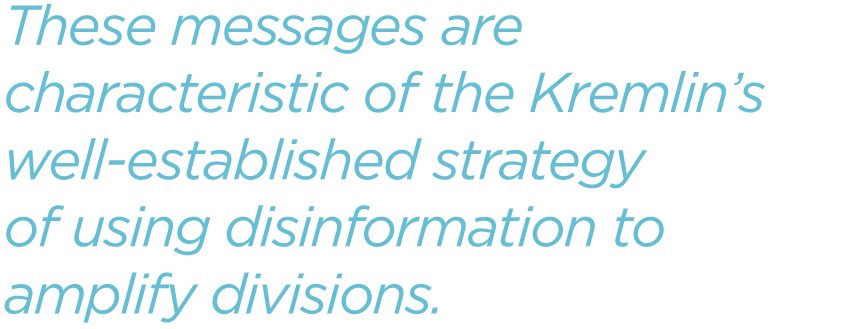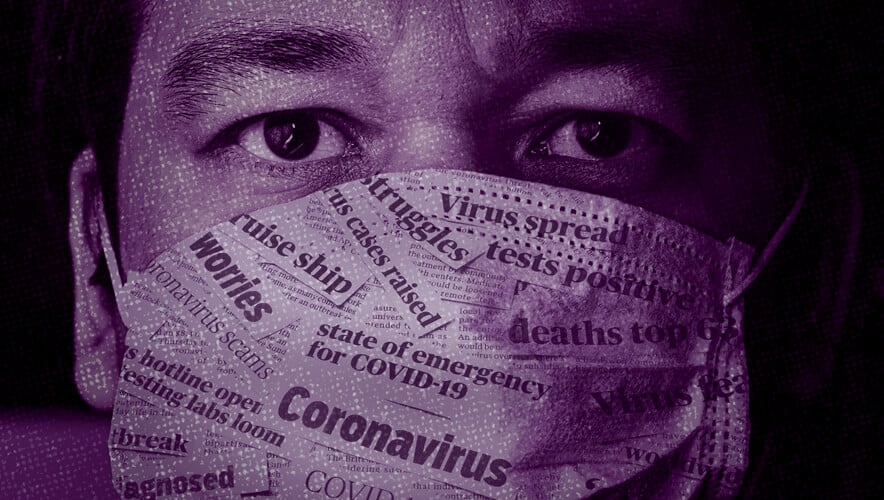As the Pandemic Spreads, An Infodemic Rages
As the coronavirus pandemic spread around the world this year, another destructive development trailed in its wake: an infodemic.
Infodemic is the term used by the World Health Organization (WHO) to describe the overabundance of information about COVID-19 that, like the virus itself, made its way into virtually every country. The problem with this overload is that much of the information was not true.
Reports have cropped up all over the world about how governments, interest groups, and other political actors have used the pandemic for political purposes—to sow instability or advance an agenda in a conflict, according to the European External Action Service (EEAS), which helps conduct European Union (EU) foreign and security policy.
“With the outbreak of COVID-19, we have seen the proliferation of significant quantities of news, myths, and disinformation about it—coming from various sources both within and outside of the European Union,” the EEAS said in a special assessment report on the information environment surrounding the coronavirus. The special report was issued by EEAS on 19 March 2020.
Copious amounts of both misinformation and disinformation have spread on- and offline, the report found. The difference between the two is one of intent. Misinformation involves the unintentional spread of false information. Disinformation is intentional, involving the production and/or dissemination of verifiably false content, and it is spread for political or financial gain.
And these disinformation efforts, which have taken place all around the world, have featured a range of trending false narratives, according to the report. One of the more common falsehoods is that the coronavirus was intentionally deployed as a biological weapon.

Some pushing this narrative asserted that it was deployed by China. Others said it was deployed by the United Kingdom, or Russia, or the United States. Among those propagating the latter, some said that the coronavirus did not break out in Wuhan, China, but was secretly cultivated in U.S.-owned laboratories around the world, according to the report.
European-centric false narratives have also been disseminated, the report found. One is that migrants caused the pandemic and continue to spread the virus throughout the EU. Another is that the EU has been unable provide urgent support to its member states hit hard by the pandemic, such as Italy. Instead, this narrative goes, the EU is relying on external sources of financial help, with China mentioned most often as the source of such assistance.
Other false narratives have pushed a range of conspiracy theories. These include reports that the coronavirus pandemic was accurately predicted years ago, as well as theories that the pandemic was foretold as a great future plague, or as a precursor to World War III, according to the EEAS report.
Other disinformation efforts feature secret “Deep State” conspiracies; for example, that the pandemic is a Deep State plot to control population growth, or that it is caused by chemtrails—chemical agents sprayed in the sky by high-flying aircraft for undisclosed nefarious purposes. Although chemtrails have been conspiracy theory fodder for years, there also were more contemporary false narratives; one such theory linked the coronavirus to the development of 5G, with Wuhan, China, as a 5G testing ground.
The sources of all this disinformation vary, and Russia is named as a prominent one, the report found.
“The coronavirus is a relentless and daily topic in pro-Kremlin media, including state-owned outlets…These messages are characteristic of the Kremlin’s well-established strategy of using disinformation to amplify divisions, sow distrust and chaos, and exacerbate crisis situations,” the authors wrote.
Bad actors in the Middle East region have also been active. “The outbreak has been used [in the Middle East] by authorities, terrorist organizations, and prominent influencers to advance geopolitical agendas,” the report found.
For example, the Islamic State (ISIS) militant group exploited trending hashtags relating to the coronavirus to spread its own propaganda. The al Qaeda-linked al Shabaab group warned Muslims that infectious diseases such as coronavirus are spread “by the crusader forces,” according to media reports. A few false narratives have involved Iran, as both instigator and victim. One claimed that the coronavirus was created by Iran as a political tool; another alleged that the virus was a biological weapon created by the United States to attack Iran.
In the Persian Gulf region, disinformation efforts targeting Qatar falsely assert the country is responsible for the spread of COVID-19.
Since 2017, neighboring countries Saudi Arabia, the United Arab Emirates, Egypt, and Bahrain have maintained a land, sea, and air blockade of Qatar, after years of disputes regarding Doha’s foreign policy.
Earlier this year, Qatar came under attack from Twitter bot accounts blaming the country for the coronavirus outbreak. In addition, under the hashtag #qatariscorona, a Saudi-based journalist tweeted that Qatar had known about the existence of COVID-19 since 2015 and paid billions to China to grow the virus, according to various media reports.
Such disinformation efforts cause several risks, says security risk management expert Adam Isles, a principal at The Chertoff Group.
Effective and accurate information sharing on spread, impact, therapies, and other countermeasures is obviously key to combating the pandemic. But disinformation can be used to sow fear and doubt, increasing the risk that the public will distrust the information being provided by health officials, Isles tells Security Management.
This risk can be compounded in cases where the accurate information is not spread as widely as it should be. “When local health officials hesitate to share information across borders, everyone is hurt,” Isles says.
“It also distracts precious public health resources, requiring officials to spend time swatting down rumors rather than actually dealing with the disease,” he adds.

Another risk of disinformation is that it can be used to destabilize current international security arrangements and agreements. Isles cites one recent example of a false account, apparently of Russian origin, that a U.S. solider in Lithuania had COVID-19. “The risk is that such tradecraft could be used more broadly to subvert the U.S. presence overseas,” he says.
Still another destabilizing risk is that disinformation can be used to foster paranoia that can lead to violence. “For years we have seen examples of how social media can be used to incite mob violence,” Isles says. “Add to that rumors that a targeted group is somehow responsible for the spread of the disease, and it is possible to envision very real risks to public safety.”
And disinformation can also be used internally by a government that wants to avoid criticism of how it responded to a deadly development such as the coronavirus. “Disinformation can be used to deflect attention from haphazard internal responses to the pandemic,” Isles says.
Of course, some information consumers also do their part in keeping disinformation alive. In a recent report from the U.S. National Academies of Sciences, Engineering, and Medicine, New Fronts in the War on Misinformation, Arizona State University scholar Kristy Roschke says surveys show most people are concerned about false information, but they sometimes behave as if they want it.
“There’s a dichotomy between what people say that they want—which is credible, trustworthy information—and a lot of the information that they click on,” she said.
Correction: A previous version of this article listed the date of the Qatar blockade as 1917, not 2017. Security Management regrets the error.
